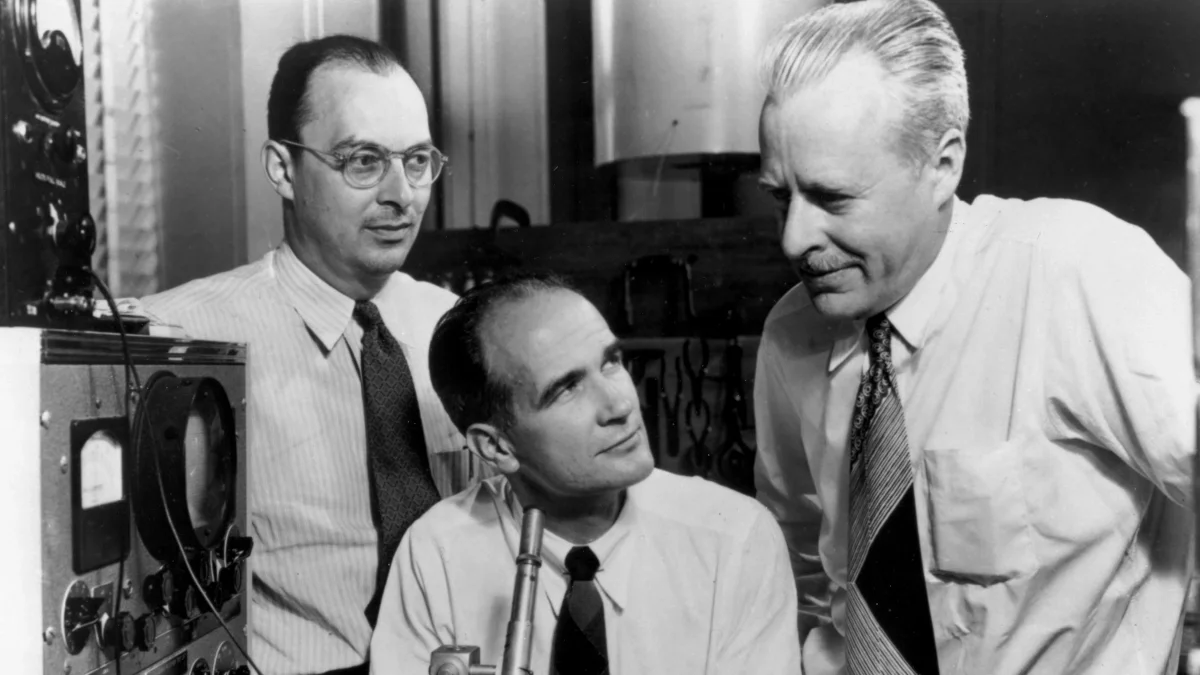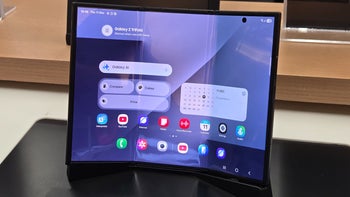1953 Bell Labs film explains how transistors will lead to the production of mobile devices

There are 16 billion of them in the A16 Bionic SoC and the more of them you have stuffed inside a chip, the more powerful and energy efficient that chip is. We are talking, of course, about transistors. And these technological marvels are the subject of a 1953 video documentary produced by Bell Labs that we discovered on YouTube. The transistors made seventy years ago are nothing like the ones used now in modern times.
It is interesting to realize that before the transistor was discovered, large vacuum tubes were necessary to control the flow of current in a device. Today, that job belongs to the transistor. Considering the size of the vacuum tubes used in radios and televisions back in the day, you can pretty much be assured that if not for the 1947 invention of the transistor, there would be no mobile phone industry.
Back in 1915 Trans-Atlantic calls relied on as many as 500 connected vacuum tubes
Originally, vacuum tubes were used to help connect landline calls that traveled from coast to coast. In 1915, the use of vacuum tubes helped the first New York to San Francisco phone call become a reality. With 500 vacuum tubes connected, phone calls could be made over the Atlantic Ocean. Sure, we take this all for granted these days as the small device in our pocket can connect us with another person standing thousands of miles away.


Radar and microwave relay stations (used for coast-to-coast telephony and television) all depended on the vacuum tube until the transistor was created. Three men working at Bell Telephone Labs found a way to amplify an electric current within a solid without having to depend on a vacuum or heating element. And the power needs for a transistor are much less than those required for a vacuum tube. Transistors also don't heat up like vacuum tubes do allowing many of today's devices to be made small enough to fit in our pockets.
In a related statement that foreshadows the modern tech experience, the announcer says, "Because they are so tiny, transistors have made it possible to miniaturize many types of electronic equipment." And the film goes on to note that transistors "may also be used in multi-channel telephony which increases the number of calls that can be carried at the same time along telephone lines."
The documentary noted how phone calls could be improved thanks to the transistor. Bell Telephone used the technology to help amplify sounds to make the person on the other end of a long distance call sound like they were right next to you. Transistors, placed directly inside telephones, would allow a farmer, living in a rural area far from central exchanges, to hear and be heard loud and clear when on a call.
In the 1953 video, there was hope that someday consumers could play music from a device on their wrist
And while everything related to telephony was still wired, it is interesting to see that transistors could be used to help route long distance calls. And looking ahead to the current day smartwatch, the film says that thanks to those working on improving the transistor and looking for other uses for it, "you may be able to get music with the flick of your wrist from the so-called Dick Tracy radio."
The film also talks about a portable television set that would allow users to take video entertainment everywhere which is something that we now enjoy by streaming movies and television shows on our mobile phones and tablets. And while a whole room was needed to fit the computing gear needed for mathematical calculations, today many basic calculations can be handled on a phone or even a smartwatch.
Check out this statement from the film. "Of course, we cannot build a calculating machine as flexible as the human brain but even a man-made computer designed to do hundreds of brain-like calculating jobs might need an Empire State Building to house it and a Niagara Falls to power and cool it if vacuum tubes were used in its construction." So yes, the transistor also helps make the desktop PC and the laptop possible.
And these days we continue to make transistors smaller and smaller so that more of them can fit into a dense location. As long as this keeps happening and Moore's Law (the observation that the number of transistors inside a chip double every other year) stays alive, faster and more powerful phones, tablets, and smartwatches can be made.
Follow us on Google News













Things that are NOT allowed:
To help keep our community safe and free from spam, we apply temporary limits to newly created accounts: